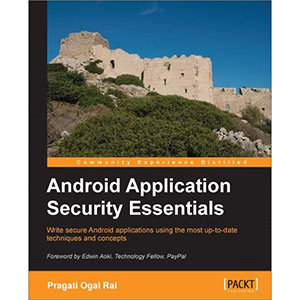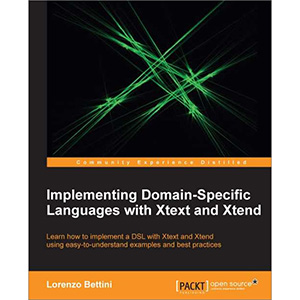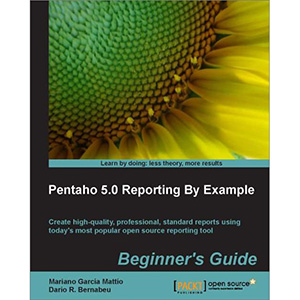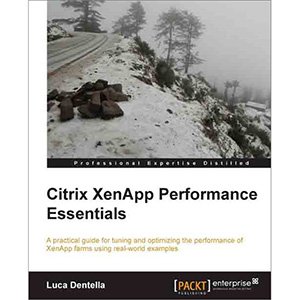Wow! eBook: Android Application Security Essentials - 5 new eBooks |  |
- Android Application Security Essentials
- Implementing Domain-Specific Languages with Xtext and Xtend
- Getting Started with Google Guava
- Pentaho 5.0 Reporting by Example: Beginner’s Guide
- Citrix XenApp Performance Essentials
| Android Application Security Essentials Posted: 16 Jan 2014 06:54 AM PST
Book DescriptionIn today's techno-savvy world, more and more parts of our lives are going digital, and all this information is accessible anytime and anywhere using mobile devices. It is of the utmost importance that you understand and implement security in your apps that will reduce the likelihood of hazards that will wreck your users’ experience. “Android Application Security Essentials” takes a deep look into Android security from kernel to the application level, with practical hands-on examples, illustrations, and everyday use cases. This book will show you how to overcome the challenge of getting the security of your applications right. “Android Application Security Essentials” will show you how to secure your Android applications and data. It will equip you with tricks and tips that will come in handy as you develop your applications. We will start by learning the overall security architecture of the Android stack. Securing components with permissions, defining security in a manifest file, cryptographic algorithms and protocols on the Android stack, secure storage, security focused testing, and protecting enterprise data on your device is then also discussed in detail. You will also learn how to be security-aware when integrating newer technologies like NFC and mobile payments into your Android applications. At the end of this book, you will understand Android security at the system level all the way to the nitty-gritty details of application security for securing your Android applications. What you will learn from this book
Approach Who this book is written for Book Details
Related Books
The post Android Application Security Essentials appeared first on Wow! eBook. |
| Implementing Domain-Specific Languages with Xtext and Xtend Posted: 16 Jan 2014 06:51 AM PST
Book DescriptionXtext is an open source Eclipse framework for implementing domain-specific languages together with its IDE functionalities. It lets you implement languages really quickly, and, most of all, it covers all aspects of a complete language infrastructure, starting from the parser, code generator, interpreter, and more. “Implementing Domain-Specific Languages with Xtext and Xtend” will teach you how to develop a DSL with Xtext, an Eclipse framework for implementing domain-specific languages. The chapters are like tutorials that describe the main concepts of Xtext such as grammar definition, validation, code generation, customizations, and many more, through uncomplicated and easy-to-understand examples. Starting with briefly covering the features of Xtext that are involved in a DSL implementation, including integration in an IDE, the book will then introduce you to Xtend as this language will be used in all the examples throughout the book. We then proceed by explaining the main concepts of Xtext, such as validation, code generation, and customizations of runtime and UI aspects. By the end of the book, you will have learned how to test a DSL implemented in Xtext with Junit, in order to follow a test-driven development strategy that will help the developer implement maintainable code that is much faster and cleaner. A test-driven approach is used throughout the book when presenting advanced concepts such as type checking and scoping. The book also shows you how to build and release a DSL so that it can be installed in Eclipse, and gives you hints on how to build the DSL headlessly in a continuous integration server. “Implementing Domain-Specific Languages with Xtext and Xtend” aims to complement the official Xtext documentation to explain the main concepts through simplified examples and to teach the best practices for a DSL implementation in Xtext. It is a Beginner's Guide which should set you up for professional development DSL and its Eclipse IDE tooling. What you will learn from this book
Approach Who this book is for Book Details
Related Books
The post Implementing Domain-Specific Languages with Xtext and Xtend appeared first on Wow! eBook. |
| Getting Started with Google Guava Posted: 16 Jan 2014 06:46 AM PST
Book DescriptionJava continues to maintain its popularity and is still one of the main languages used in the software industry today. But there are things in Java that are difficult to do that can be made easier; that's where Guava comes in. Guava provides developers with a way to write better code, with less effort. Getting Started with Google Guava will show the reader how to start improving their code from the very first chapter. Packed with examples and loads of source code, this book will have an immediate impact on how you work with Java. This book starts with using Guava to help with the common tasks that Java developers perform. Then you'll work your way through more specialized situations and finally some great functionality Guava provides that can add a lot of power to your applications with little effort. You will learn about Guava's famous Collections classes that add unique features, like the Bi-Map, to Java's already great Collection classes. We'll see how to add some functional programming aspects to our code. We will also learn about using a self-loading cache for improved performance in our applications, and how to use the EventBus to create software that takes advantage of event-based programming. What you will learn from this book
Approach Who this book is written for Book Details
Related Books
The post Getting Started with Google Guava appeared first on Wow! eBook. |
| Pentaho 5.0 Reporting by Example: Beginner’s Guide Posted: 16 Jan 2014 06:42 AM PST
Book DescriptionOpen source reporting tools and techniques, such as PRD, have been comparable in quality to their commercial counterparts this is largely due to the market’s marked tendency to choose open source solutions. PRD is a very powerful tool and in order to take full advantage of it you need to pay attention to the important details. Pentaho 5.0 Reporting by Example: Beginner's Guide clearly explains the the foundation and then puts those concepts into practice through step-by-step visual guides. Feeling confident with your newly discovered, desirable, skill you will have the power to create your very own professional reports including graphics, formulas, sub-reports and many other forms of data reporting. Pentaho 5.0 Reporting By Example: Beginner's Guide is a step-by-step guide to create high quality, professional reports. Starting with the basics we will explore each feature to ensure a thorough understanding to peel back the curtain and take full advantage of the power that Pentaho puts at our fingertips. This book gives you the necessary resources to create a great variety of reports. You will be able to make reports that contain sub-reports, include graphics, sparklines and so on. You will also be able to parameterize your reports so that the final user can decide what information to visualize. You will be able to create your own stoplight type indicators and drill down in your reports. and execute your reports from your own web application. Pentaho 5.0 Reporting By Example: Beginner's Guide lets you learn everything necessary to work seriously with one of the world's most popular open source reporting tools. This book will guide you chapter by chapter through examples, graphics, and theoretical explanations so that you feel comfortable interacting with Pentaho Report Designer and creating your own reports. What you will learn from this book
Approach Who this book is for Book Details
Related Books
The post Pentaho 5.0 Reporting by Example: Beginner’s Guide appeared first on Wow! eBook. |
| Citrix XenApp Performance Essentials Posted: 16 Jan 2014 06:38 AM PST
Book DescriptionCitrix XenApp is an application virtualization product that allows users to connect to their corporate applications from any device. XenApp can host applications on central servers and allows users to interact with them remotely or stream and deliver them to user devices for local execution. Citrix XenApp Performance Essentials is a practical guide that provides you guidelines, best practices, and real world examples that will help you to improve the performance of your farm, identifying and solving possible bottlenecks and using advanced features including the new features provided by XenApp 6.5. Citrix XenApp is widely used to deliver enterprise applications to end users. This book covers the whole process of optimizing a XenApp farm, starting from the design phase all the way to tuning for remote users and connecting via geographic links. With your farm in production, you will understand what to monitor and how to optimize your farm, as well as how to use an open-source tool, WANem, to test the applications' behavior with different link conditions. You will also learn which settings and features XenApp offers to optimize CPU and memory utilization. This book will help you to prevent or solve performance problems and make your users happy working with published applications. What you will learn from this book
Approach Who this book is written for Book Details
Related Books
The post Citrix XenApp Performance Essentials appeared first on Wow! eBook. |
| You are subscribed to email updates from Wow! eBook To stop receiving these emails, you may unsubscribe now. | Email delivery powered by Google |
| Google Inc., 20 West Kinzie, Chicago IL USA 60610 | |





Tidak ada komentar:
Posting Komentar